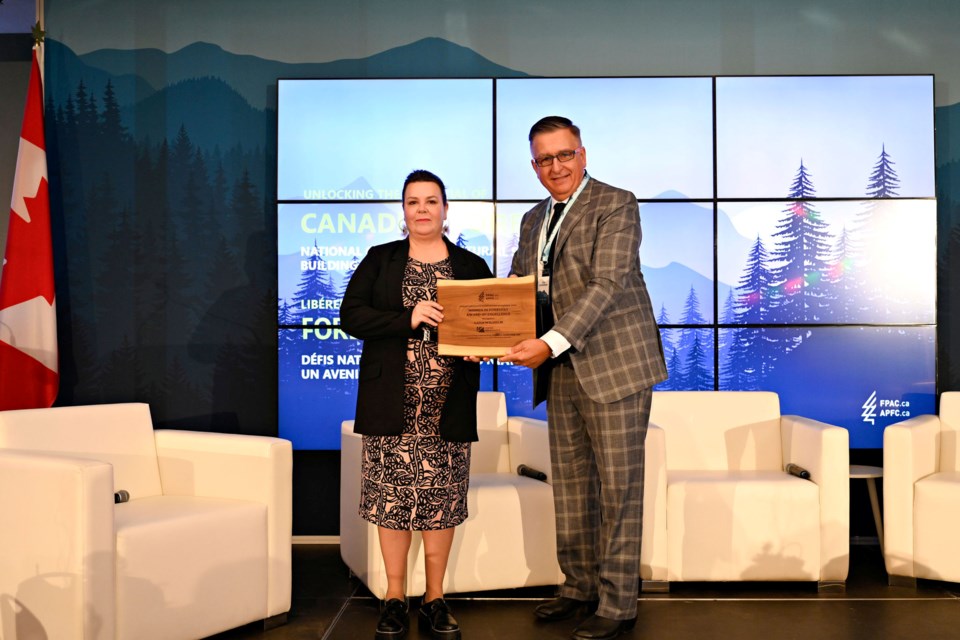
Hiroshi Watanabe Savara Inc. ( NASDAQ: SVRA ) is developing Molgramostim, "a non-glycosylated form of recombinant human granulocyte-macrophage colony-stimulating factor (GM-CSF)," in a nebulizer formulation. The target indication is a rare disease called Autoimmune Pulmonary Alveolar Proteinosis (aPAP), a form of PAP.
I covered SVRA in 2019 , when it did not have data, and then again in 2021 , when it had already failed its phase 3 trial. I'm looking at SVRA again because it just succeeded in another phase 3 trial with the same indication and molecule. What is aPAP, and what are the current treatment options? APAP is a rare autoimmune condition that falls under the broader category of Pulmonary Alveolar Proteinosis (PAP).

The body's immune system accidentally produces antibodies against granulocyte-macrophage colony-stimulating factor (GM-CSF) that can destroy them. GM-CSF is necessary for alveolar macrophages to mature. These are cells responsible for eliminating surfactant - a substance that helps keep the air sacs in the lungs open - from the alveoli.
In aPAP, the lower numbers of functional macrophages cause this surfactant to accumulate, causing the alveoli to fill with a proteinaceous material. The gold standard of care currently is WLL, or whole lung lavage. In this method, the whole lung is washed out with a saline solution to remove the accumulated surfactant.
I am dividing the WLL discussion into three parts - difficulty, efficacy, and cost. Difficulty Procedure Complexity: WLL is a complex and technically demanding procedure . Here, each lung of the patient is sequentially washed with saline under general anesthesia, in a hospital setting, under the care of a specialized team that includes anesthesiologists, pulmonologists, and respiratory therapists.
Preparation: A double-lumen endotracheal tube is put into one lung at a time. One lung is ventilated while the other is filled with saline and then drained multiple times to remove the accumulated material. Duration: WLL can take several hours and may require post procedure monitoring in an intensive care unit.
Risks: There are potential risks , including bleeding, infection, hypoxemia (low blood oxygen), and complications related to anesthesia. Efficacy WLL is highly effective for treating aPAP. WLL has a significant positive effect on lung function, and alleviates symptoms like shortness of breath and low blood oxygen levels.
Symptom Relief: A large number of patients experience significant symptom relief after WLL. Some patients, however, may need repeated lavages over time as the condition can recur. Long-Term Outcomes: While WLL does not cure aPAP, it can manage symptoms and improve quality of life.
The frequency of recurrence varies , some patients may go years without needing another lavage, while others might require more frequent treatment. Cost The cost of WLL in the United States can vary widely depending on factors such as the hospital, the region, the patient's insurance coverage, and additional medical costs like anesthesia and post-procedure care. Some sources , albeit about a decade old, put the cost at around $30,000.
GM-CSF treatment Although not approved yet, GM-CSF therapy has been used off-label for a number of years as an effective treatment option for aPAP. There are a few things to consider here. One, both inhaled and subcutaneous GM-CSF have been used, however, meta-analyses of studies have shown that the inhaled option is better.
Two, GM-CSF has been considered as an adjunct to WLL, but studies have shown that GM-CSF alone has done just as well as an adjunct. A meta-analysis of 10 studies showed : The WLL therapy, whose response rate ranged from 70% to 84%, has been used as standard treatment for aPAP patients for decades. However, compared to the WLL therapy alone, some studies reported that WLL followed by inhaled GM-CSF therapy had better improvements in pulmonary function and radiology.
In this meta-analyses, the pooled response rate of GM-CSF therapy (81%) was no less than WLL therapy. The analyses of pulmonary function (including DLCO, TLC, VC, FEV1, FVC), DSS, and 6MWD also confirmed the effectiveness of GM-CSF therapy. Furthermore, the subgroup analyses showed no significant differences for response or relapse rate with regard to the proportion of patients using WLL as combination therapy.
These results demonstrated that GM-CSF therapy could be recognized as an alternative optimal method rather than a supplement to WLL therapy. Savara's positioning and data Interestingly, Savara used previous GM-CSF data to directly jump to a phase 3 trial from scratch, as my 2019 article discussed. What it brings to the table is a clinical trial to prove what people already knew and used off-label - that GM-CSF is a working alternative to the costly and invasive WLL.
It also claims a more precise delivery. Currently, some doctors take an injectable version of GM-CSF called Leukine and put it in a nebulizer. Molgramostim is claimed to be more precise.
Despite the long-proven efficacy of GM-CSF, Savara managed to fail to meet the primary endpoint in a phase 3 trial called IMPALA, way back in 2019. This was a surprise because, whereas it failed to show even a 6-8mmHg placebo-corrected decrease in AADO2, a measure of low blood oxygen called alveolar-arterial oxygen gradient, historical GM-CSF data has shown AADO2 reduction in the scale of 12mmHg. The company cited various faults with the study - a high placebo response, a too short duration (24 weeks) to assess WLL improvements, data defects, etc.
They began a new study called IMPALA-2, which had as its primary endpoint DLCO or diffusion capacity of the lungs, which was a secondary endpoint in IMPALA. The trial was also extended to 48 weeks; 24 weeks for primary analysis and another 24 for placebo analysis. Another important change was that patients on supplemental oxygen were excluded, as this created the data defect I just mentioned.
In June this year, the company announced that IMPALA-2 met its primary endpoint of a 24-week change in the hemoglobin-adjusted percent predicted DLCO with statistical significance. Not only so, but the effect lasted 48 weeks, which was a key secondary endpoint indicative of the durability of treatment. The company sees around ~5,000 US patients and sees a price point between $300k-$500k per patient per year.
That is considerably higher than WLL, so they really have to prove they are better than WLL, if not to the FDA, but to the market. I am not sure switching to a "soft" endpoint really makes their case. They are also expecting a 12-year biologic exclusivity in the US upon approval.
Comparison of A-aDO2 and DLCO as endpoints A-aDO2 measures the difference between the oxygen content in the alveoli and the oxygen content in arterial blood. It indicates how well oxygen is being transferred from the lungs to the blood. DLCO measures how well gases like carbon monoxide (CO) move from the air in the lungs into the blood.
It reflects the efficiency of the alveolar-capillary membrane. In APAP, the accumulation of surfactant in the alveoli can block gas exchange, leading to a higher A-aDO2. Higher A-aDO2 suggests worsening oxygenation, making it a useful measure of the overall gas exchange function of the lungs.
Thus, A-aDO2 is a direct and sensitive indicator of impaired oxygen transfer in the lungs, which is a primary concern in APAP. On the other hand, DLCO, while a useful measure, is still indirect. While it can show whether surfactant accumulation is interfering with gas diffusion, its results might be influenced by factors beyond just oxygenation, such as hemoglobin levels and the overall integrity of the alveolar-capillary membrane.
For these reasons, A-aDO2 is a more suitable measure for aPAP because it directly measures oxygenation, while DLCO gives a broader picture of lung function and alveolar health. Financials SVRA has a market cap of $727mn and a cash balance of $121mn. They also added a $100mn equity financing in July, which makes their cash balance approximately $216mn.
Research and development expenses were $17.6 million for the three months ended June 30, 2024, while general and administrative expenses were $5.5 million.
At that rate, they have a cash runway of 7-8 quarters, or well into 2026. Risks There are a number of risks. First, WLL is an effective if invasive therapy; its effect lasts for a long time, so many doctors will not be convinced by anything else.
GM-CSF has shown that it is almost as good as WLL. However, the IMPALA trial failed to demonstrate this. IMPALA-2 switched around endpoints and managed to score, but it left me unconvinced.
The price point they're considering for GM-CSF is pretty high. Given the availability of a cheaper option that is also generally safe, the market may require some coaxing. Bottom Line This is a difficult call.
When a company has a phase 3 trial that meets its primary endpoint, lay investors may want to jump into the stock. They tend to forget the small nuances, some of which I discussed here. I could be wrong, and the FDA may well look at Molgramostim and its endpoints less critically than I have - even the market may be agreeable to a high orphan drug price tag.
However, out of an overabundance of caution, I will avoid this name. About the TPT service Thanks for reading. At the Total Pharma Tracker , we offer the following:- Our Android app and website features a set of tools for DIY investors, including a work-in-progress software where you can enter any ticker and get extensive curated research material.
For investors requiring hands-on support, our in-house experts go through our tools and find the best investible stocks, complete with buy/sell strategies and alerts. Sign up now for our free trial, request access to our tools, and find out, at no cost to you, what we can do for you. Avisol Capital Partners is made up of a team of medical experts, finance professionals and techies, all of whom invest their own money in the picks they share.
They aim to help readers find the middle ground between value and growth investing, as they demystify the biopharma industry. Total Pharma Tracker Learn more Analyst’s Disclosure: I/we have no stock, option or similar derivative position in any of the companies mentioned, and no plans to initiate any such positions within the next 72 hours. I wrote this article myself, and it expresses my own opinions.
I am not receiving compensation for it (other than from Seeking Alpha). I have no business relationship with any company whose stock is mentioned in this article. Seeking Alpha's Disclosure: Past performance is no guarantee of future results.
No recommendation or advice is being given as to whether any investment is suitable for a particular investor. Any views or opinions expressed above may not reflect those of Seeking Alpha as a whole. Seeking Alpha is not a licensed securities dealer, broker or US investment adviser or investment bank.
Our analysts are third party authors that include both professional investors and individual investors who may not be licensed or certified by any institute or regulatory body..














